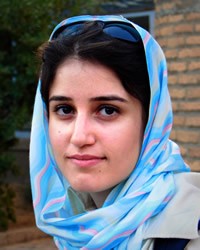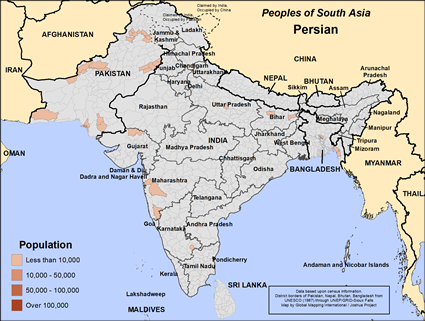Persian in Pakistan

Photo Source:
Hamed Saber - Flickr
Creative Commons
|

Map Source:
People Group data: Omid. Map geography: UNESCO / GMI. Map Design: Joshua Project
|
| People Name: | Persian |
| Country: | Pakistan |
| 10/40 Window: | Yes |
| Population: | 13,000 |
| World Population: | 48,380,900 |
| Primary Language: | Dari |
| Primary Religion: | Islam |
| Christian Adherents: | 0.08 % |
| Evangelicals: | 0.08 % |
| Scripture: | Complete Bible |
| Ministry Resources: | Yes |
| Jesus Film: | Yes |
| Audio Recordings: | Yes |
| People Cluster: | Persian |
| Affinity Bloc: | Persian-Median |
| Progress Level: |
|
Introduction / History
By definition, Persians (also known as Iranians) are an ethnic group native to Iran. The Persian language, called Farsi, is part of the Indo-Iranian language family, and is the official language of Iran. Dari, the language of the elite in Afghanistan, is a dialect of modern Farsi. Around 1000 B. C. , Persian groups began to settle in the territory that is now Iran. Loosely associated Persian tribes became a more cohesive political unit under the Achaemenian dynasty. Their unity soon made them the dominant ethnic group in the region. For 1,200 years, Persia maintained a culture that became increasingly more complex and rigid. This laid the foundation for a successful Arabian conquest of Persia in the seventh century AD. It was not until the Islamic revolution of 1979 that massive changes came both to Iran and to the Persian people. Although the vast majority of Persians now live either in Iran or in one of the nearby Central Asian or Middle Eastern countries, small Persian communities might also live in many other nations around the world, especially in the West. Some Persians live in South Asian countries like Pakistan.
What Are Their Lives Like?
The basic social and economic unit in Persian culture is the nuclear family; however, some families join together to make larger units. Families are traditionally patriarchal, patrilineal and patrilocal. This means that their society is strictly male-dominated. The line of descent is traced through the father; property and inheritances are passed down through the males; and family and political rule belong to the men. Persian women are submissive to their husbands in public; however, they often hold a considerable amount of decision-making power in private. Men are guardians and defenders of the family honor and are responsible for protecting the chastity of their daughters and sisters. Persians prefer cross cousin marriages. Many of the Iranians in Pakistan are from ethnic minorities like the Baloch. They are often students or restaurant owners. Unfortunately, there is persecution of Shia Muslims in Pakistan. One can frequently find news stories of Shia mosques in Pakistan being bombed by Sunni militants.
What Are Their Beliefs?
Prior to the Arab invasions, the Persian religion was Zoroastrianism. This religion taught that there was an eternal struggle between the forces of good and evil. Shia Islam became the national religion of Iran in the sixteenth century, at which time the ulama (clergy) began playing an important role in both the social and political lives of the people. Today, most Persians are Shia Muslims of the Ithna Ashari branch, and are radical in their adherence to Islamic laws and principles. Thanks to the excess of the Iranian government, a high percentage of Persians are secularized and tired of forced religion. The Lord is growing his Church in Iran, and many have come to faith in recent years. Unfortunately, this does not seem to be affecting Persians in other countries like Pakistan.
What Are Their Needs?
Persians need their spiritual eyes will be opened. Some are staunch Shia Muslims while others are secularized. They need believers to take the glory of Christ to them.
Prayer Points
Pray for Persian believers from Iran to take Christ to Persians in other countries including Pakistan. Pray for a spiritual hunger among the Persian diaspora that will result in a movement to Christ in Pakistan and other countries. Pray for the Lord to show himself powerful and loving to the Persians in Pakistan.